Key takeaways:
- Religious education fosters a sense of community and personal transformation through discussions and storytelling.
- Teaching others enhances both the educator’s understanding and the empowerment of students, promoting a reciprocal learning journey.
- Creating an inclusive and interactive learning environment encourages student engagement and deeper exploration of religious concepts.
- Sharing personal experiences in teaching can build trust and foster spiritual growth among students.

Understanding Religious Education
Understanding Religious Education can be a deeply enriching experience. I remember the first time I led a discussion on the significance of rituals in various faiths. It struck me how these practices foster a sense of community, connecting individuals to something greater than themselves and to one another.
In my experience, religious education isn’t just about imparting knowledge; it’s about igniting a passion for exploration. When students share their thoughts, it opens a window into their lives, and I often find myself asking, how do these beliefs shape their daily decisions? By engaging in these conversations, I realized how powerful storytelling can be in helping students grasp complex concepts.
The emotional journey of understanding different religions can be transformative. I recall a moment when a student shared how learning about forgiveness in various faiths changed their perspective on a personal conflict. It made me reflect on how education can transcend textbooks, prompting not just intellectual growth but profound personal change.
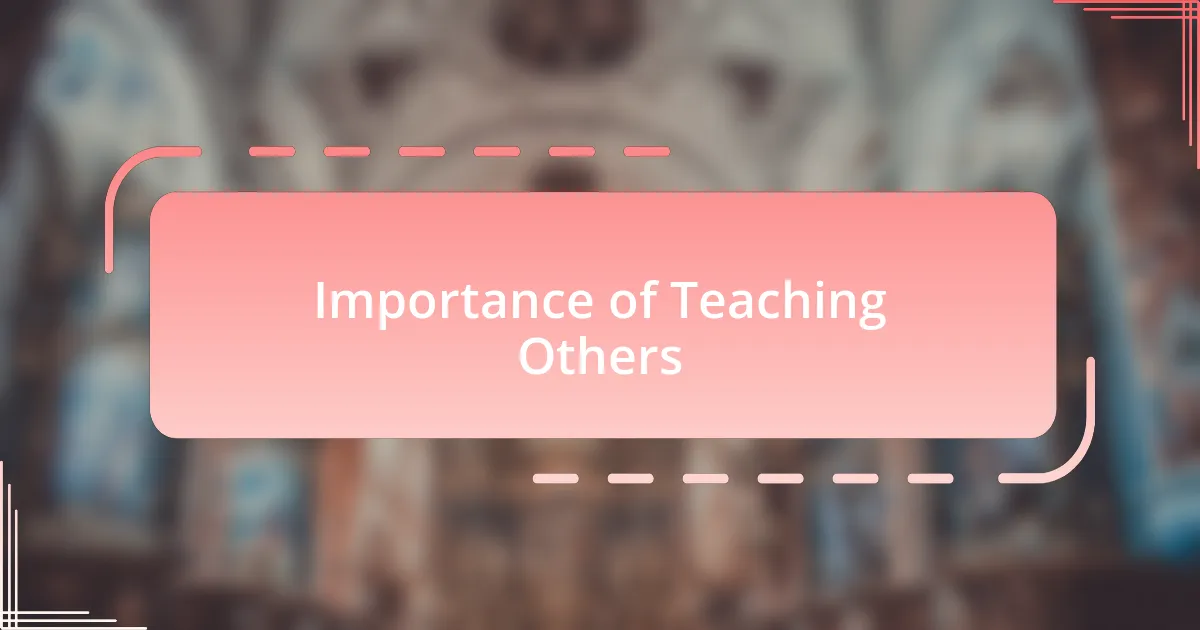
Importance of Teaching Others
Teaching others holds immense value, especially in the context of religious education. I remember a class session where I guided students through the concept of empathetic listening in different religious traditions. It was eye-opening to see how actively engaging others in dialogue facilitated their understanding. I often wonder, how much richer our world could be if we all took the time to teach and learn from one another?
The act of teaching isn’t just a one-way street; it’s a reciprocal journey of learning. One time, a student approached me after class, excited to share their insights on the interfaith dialogue we studied. Their enthusiasm reminded me that when we share knowledge, we also empower others to discover their own voices. Isn’t it fascinating to think about all the fresh perspectives that can emerge from a simple exchange of ideas?
Moreover, through teaching, I find that I deepen my own understanding of the material. While preparing a lesson on the themes of compassion across various religions, I realized how these teachings resonate not just in theory but in practice. It struck me: isn’t it remarkable how teaching others can lead to a more profound personal reflection and commitment to those values in my own life?
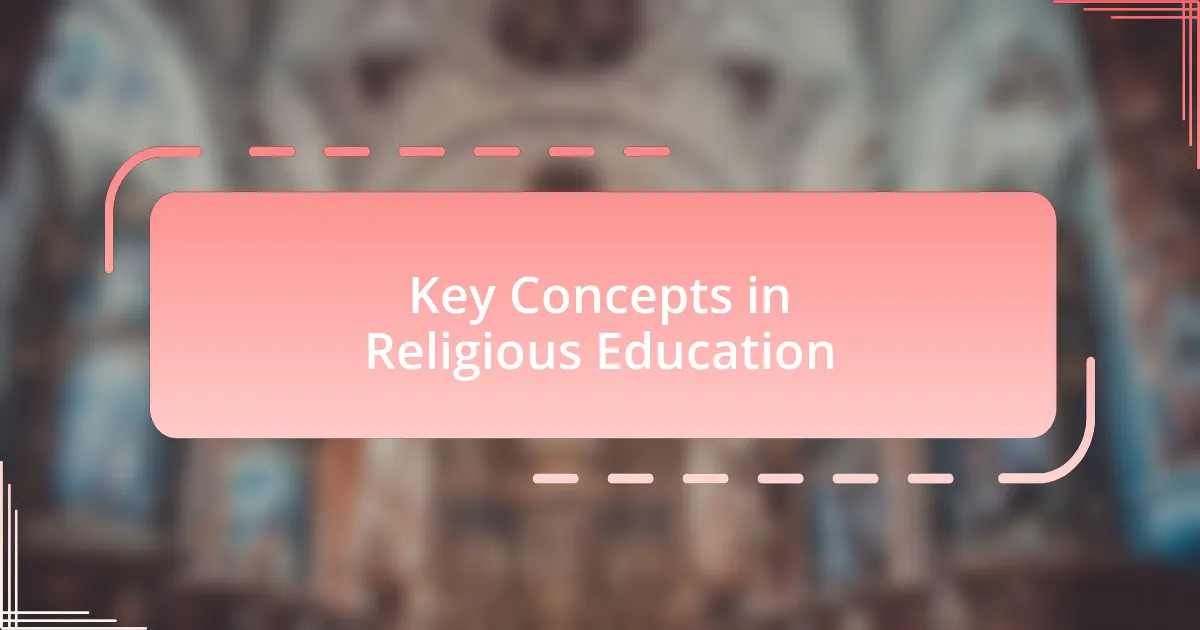
Key Concepts in Religious Education
One key concept in religious education is the idea of moral development, which often surfaces in discussions about ethical teachings across different faiths. I recall a particular lesson where we explored the Golden Rule, a principle found in many religions, encouraging students to treat others as they wish to be treated. It always amazes me how these timeless teachings prompt deep reflections on personal conduct and relationships, making students realize that moral choices often have universal roots.
Another crucial element is the understanding of diversity among religious beliefs. During a group project, I encouraged students to research different religions and present their findings. The excitement in the classroom was palpable as they discovered common themes, yet also unique practices that shaped identities. I couldn’t help but wonder: how can we cultivate respect and appreciation for diversity if we don’t actively engage with these differences?
Finally, fostering critical thinking about religious texts can profoundly enhance students’ comprehension. I set up debates around various interpretations of sacred writings, and it was fascinating to witness how students developed their analytical skills. Their thoughtful questions challenged not only my own perspectives but also led me to rethink previously held beliefs. Isn’t it rewarding to see students engage with complex ideas and grow intellectually?
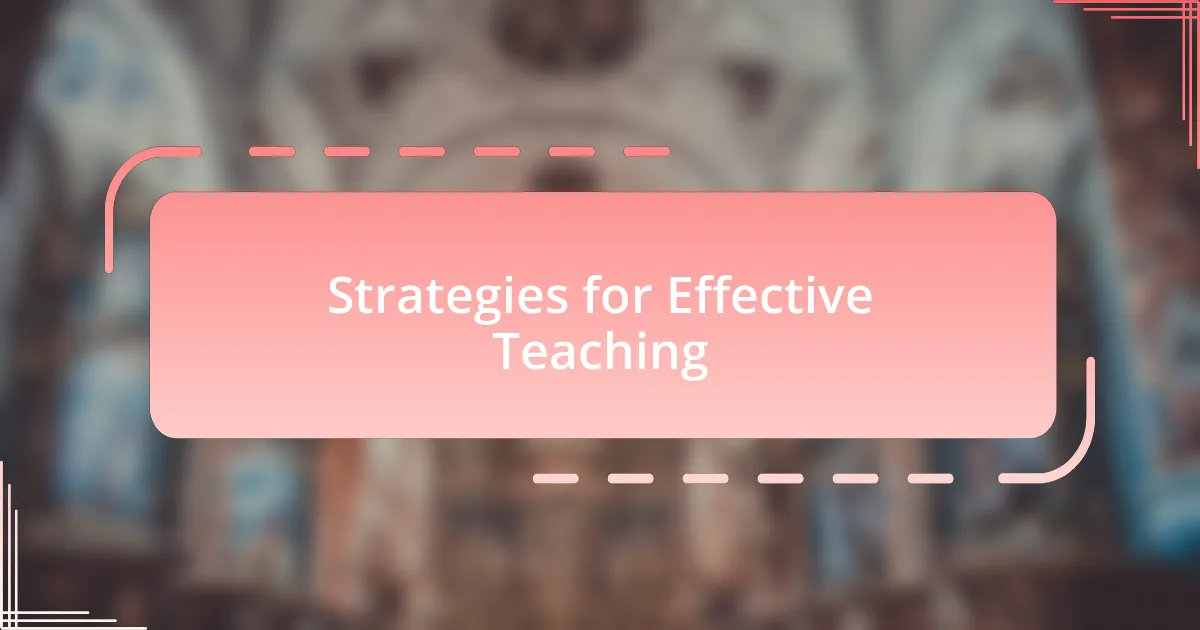
Strategies for Effective Teaching
When it comes to effective teaching, creating an inclusive environment stands out as a fundamental strategy. I recall a moment in the classroom when I invited students to share their personal experiences related to their faiths. The vulnerability that arose during that discussion was heartwarming; it made everyone feel valued and heard. Isn’t it fascinating how a simple act of sharing can foster empathy and deepen connections among students?
Another key approach involves the use of relatable examples that bridge religious concepts to everyday life. I once shared a story about a community coming together to support a family in need, drawing parallels to teachings of charity found in various religions. This sparked such vibrant conversations! Watching students draw from their own lives to connect those teachings made me wonder: how often do we miss the opportunity to relate profound lessons to what truly matters in our communities?
Lastly, employing interactive methods—like role-playing—can spark enthusiasm and engagement. I remember having students act out a parable, which not only made the lesson memorable but also highlighted the importance of context in understanding religious texts. Their laughter and creativity brought the teachings to life in a way that mere discussion could never achieve. Don’t you think that bringing educational content into an experiential realm can transform learning into something far richer?
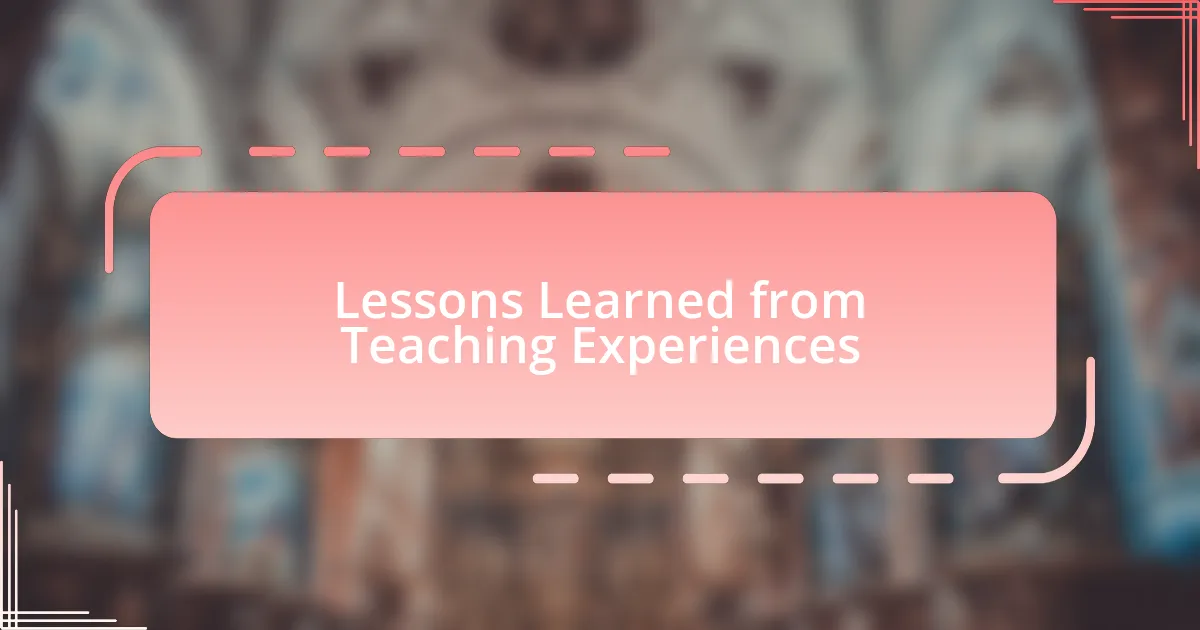
Lessons Learned from Teaching Experiences
Teaching others has profoundly shaped my understanding of patience and adaptability. I remember a particularly challenging session where not all students grasped the concept of forgiveness as taught in various religions. It compelled me to rethink my approach and find new ways to articulate these lessons. I often ask myself: how can I adjust my teaching methods to ensure everyone feels empowered to learn?
One unexpected lesson was the depth of connection that can arise from storytelling. During a lesson on different religious traditions, I shared a personal journey about my own spiritual exploration. The moment I began to speak, I could see students lean in, their eyes wide with curiosity. It dawned on me that sharing personal experiences not only makes the subject matter more relatable but also builds trust. Isn’t it incredible how our stories have the power to connect us across different backgrounds?
Lastly, the impact of feedback became crystal clear to me. After one class, a student approached me and shared how a discussion we had changed their perspective on community service. That moment underscored the importance of creating a safe space for dialogue. I constantly reflect on how these exchanges can illuminate understanding. How often do we take the time to truly listen to our students?
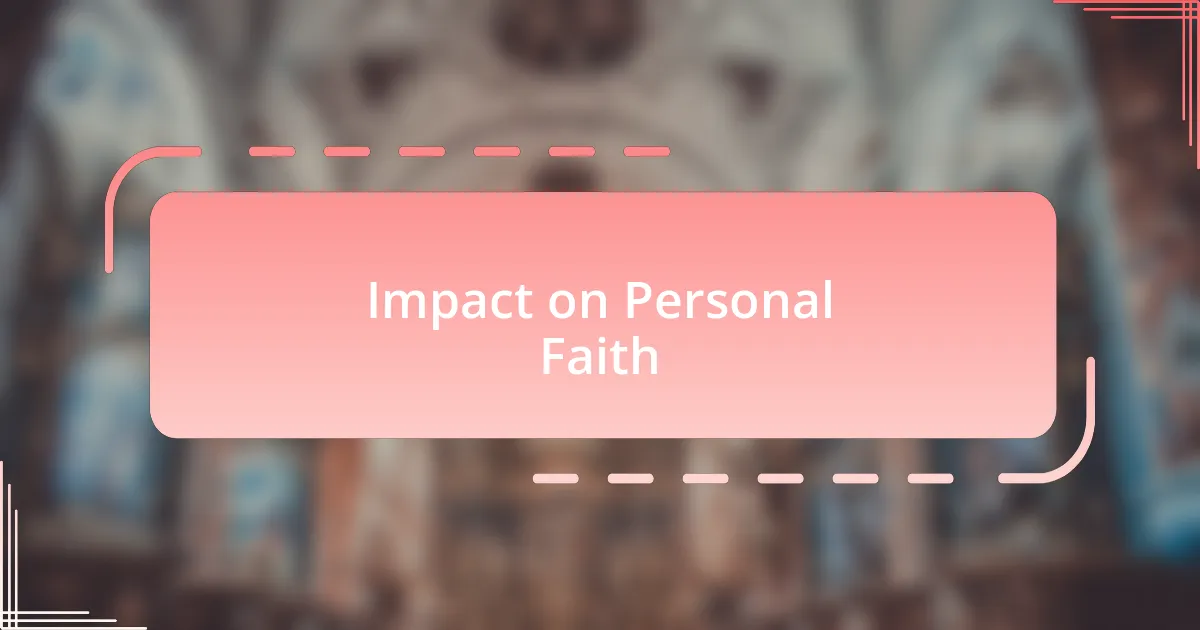
Impact on Personal Faith
I’ve found that teaching others can be a powerful catalyst for deepening my personal faith. One evening, while leading a discussion on compassion across various religious texts, I was struck by how my interpretations were challenged by my students. Their insightful questions pushed me to re-examine my beliefs, making me realize that faith is not just a personal journey but one that thrives in community dialogue. Isn’t it fascinating how the act of teaching can simultaneously expand our own understanding?
As I share my faith practices with students, I discover that vulnerability transforms the classroom atmosphere. I once recounted a moment of doubt I experienced during a difficult time, and the resonance was palpable. Several students opened up about their own struggles with faith. This exchange made me appreciate how shared vulnerabilities can foster spiritual growth and community. How often do we dismiss our moments of uncertainty as weaknesses when they could be our greatest teachers?
Teaching has also illuminated the importance of intentionality in my faith. I remember preparing a lesson on gratitude, and in the process, I sought to practice thankfulness daily, reflecting on how it permeates my life. This intentional practice not only enhanced my teaching but also rejuvenated my spiritual commitment. Have you ever noticed that engaging deeply with a topic often mirrors your personal faith journey, reinforcing your core beliefs?
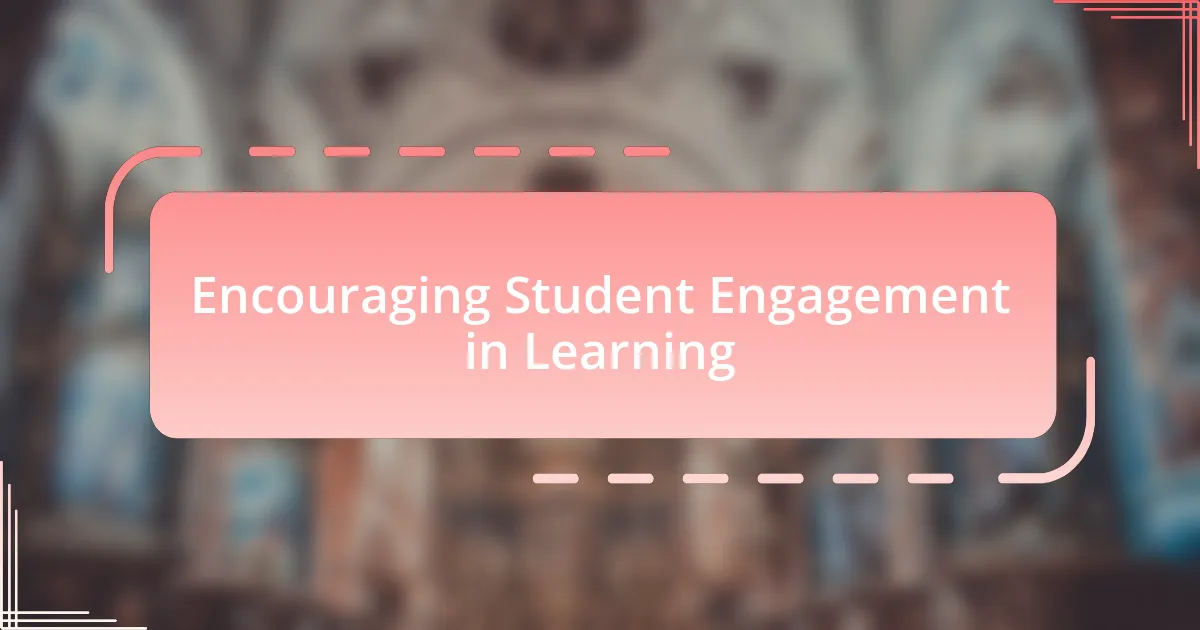
Encouraging Student Engagement in Learning
Encouraging student engagement in learning often requires me to create an environment where curiosity thrives. I recall a time when I introduced a project that allowed students to explore their own religious traditions. The excitement in their voices as they shared stories from their backgrounds was infectious, and it became clear that allowing them to lead the conversation sparked a deeper interest in the subject matter. Have you ever noticed how students light up when they discuss something they’re passionate about?
In my experience, incorporating interactive elements into lessons can elevate engagement levels significantly. During one class, I organized a debate on ethical dilemmas found in different religious contexts. The spirited discussions not only encouraged students to articulate their beliefs but also helped them develop critical thinking skills. It was rewarding to see them take ownership of their learning, proving that when we invite students to actively participate, they become more invested in the material.
I’ve also learned that varied teaching methods can meet the diverse needs of students and keep them engaged. For example, I used a visual art project to help explore spiritual themes. Watching students express their understanding through creativity reinforced the principle that learning can take many forms, and each student can contribute a unique perspective. Isn’t it powerful when we allow personal expression to guide the learning process?